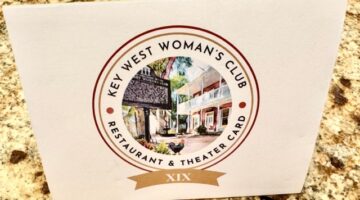Watergate: A Keys connection
KONK LIFE STAFF WRITER
Recently, Konk Life published a story on the coincidental connection between two Key Westers and a “bag man” for the Committee to Re-Elect the President (or CREEP) who came to infamy during the culmination of the Watergate Hearings in Washington D.C. back in 1973 that this year are celebrating their 25th anniversary.
In the story, Timothy J. Gratz, today a founding member of the Keys and Monroe County Coalition on Human Trafficking, was quoted as saying that in 1971, as a student at the University of Wisconsin-Madison, he came to be state chairman of the Wisconsin College Republicans and in that capacity met and became friends with Karl Christian Rove, at that time the National Chairman of the College Republicans. Rove eventually would become a Republican Party consultant and policy advisor credited with the victories of George W. Bush in the 2000 and 2004 presidential campaigns, and in 2012 protested Fox News’ call of that year’s election of Barack Obama as president and since then his tactics in supporting conservative candidates have attracted criticism even from elements within the Tea Party movement. (More about Rove later.)
Gratz also revealed that in December 1971 he was approached by another infamous character, Donald Segretti, ultimately of Watergate fame, who attempted to recruit him for some dirty tricks against the Democrats. After objecting to Segretti’s proposals, Gratz reported him to top people in President Richard Nixon’s re-election campaign. The campaign then sent a man named Anthony Ulasewicz to investigate Gratz’s complaint against Segretti.
Ulasewicz later gained fame as the man who delivered paper bags filled with money to the Watergate defendants.
It was this story by Gratz that provoked a response from former Key West resident Bud Navero, who revealed his own coincidental connection with the Watergate story.
Navero reported that the New York Police Department in the 1950s and ‘60s developed a detective division of multi-lingual undercover bodyguards assigned to root out Communists and protect foreign and domestic heads of state visiting New York. It was known as the Bureau of Special Services and Investigations (also as the Red Squad) and served to link the NYPD with the Secret Service and the FBI.
“My father was one of them,” Navero declared, recounting that his mother had once confided to him that his dad was offered a “detail in Washington” with the Republican Party to “work for the President” but he’d turned it down.
This week Gratz elaborates on his Watergate-era meeting with Ulasewicz, who flew out to Madison from New York to investigate Gratz’s complaint against “dirty trickster” Donald Segretti.
Additionally, historian John Simkin, personally known to Tim Gratz, has reported that Ulasewicz wrote his own book called “The President’s Private Eye” in which he spends four pages on his investigation of the Gratz complaint.
(Simkin also reveals that Ulasewicz had travelled to 23 states gathering information about Nixon’s political opponents, including Edward Kennedy, Edmund Muskie, Larry O’Brien and columnist Jack Anderson, and that one of Ulasewicz’s first tasks was to investigate the role played by Edward Kennedy in the death of Mary Jo Kopechne. Ulasewicz was told about the incident by John Ehrlichman and as a result was one of the first to arrive in Chappaquiddick and spent most of the next few months investigating the case.)
Ulasewicz’s book reports that when Gratz first made his complaint against Segretti to Karl Rove, who then put him in touch with top officials at CREEP, not even the highest officials at CREEP were aware of Segretti’s work. Segretti was being “run” out of the White House by Dwight Chapin, an assistant to top Nixon lieutenant H. R. Haldeman. CREEP found out about Segretti only after Gratz’s complaint was investigated.
Gratz still finds it hard to believe that intelligent people in the White House (who include Chapin for sure and perhaps Haldeman) would have sanctioned Segretti’s activities that could have cost Nixon his re-election bid if he’d been caught before the election.
A footnote by Gratz on Karl Rove: “When I was elected chair of the Wisconsin College Republicans, I worked with Rove who was then executive director of the College Republican National Committee, and he and I became fast friends. Back then I remember Karl, who was six-foot-five, to be pencil thin. He ran a leadership training school in Wisconsin Dells in the summer of 1971 but never suggested any campaign work that could be considered questionable. It was all organizational nuts and bolts.”
[livemarket market_name="KONK Life LiveMarket" limit=3 category=“” show_signup=0 show_more=0]


Eye opening as always, Mark. Nice to know there was a little Keys flavor to the Nixon shenanigans…I might add, “Karl, we hardly knew ye…” 🙂